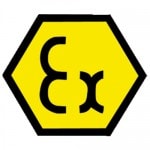
ATEX is the acronym for "ATmosphères EXplosives" . It is a European directive that regulates equipment and protection systems intended for use in environments where there is a risk of explosion due to the presence of gases, vapors, flammable liquids or combustible dusts.
The aim of the ATEX Directive is to prevent explosions and fires in potentially hazardous environments by regulating the design, manufacture, commissioning and use of equipment intended for use in these areas.
The ATEX directive applies to all industries where flammable materials are present.
ATEX zones are areas where explosive atmospheres can form due to the presence of flammable gases, vapors, liquids or combustible dusts. These zones can be found in many types of industrial facilities, such as refineries, chemical plants, waste treatment plants, mines, oil platforms and pharmaceutical production sites.
The ATEX classification is a classification of hazardous areas according to the explosion risks associated with the presence of gases, vapors, flammable liquids or combustible dusts. This classification is used to determine the safety requirements for electrical and mechanical equipment used in these areas. The zones are classified according to the probability and duration of the presence of explosive atmospheres. The zones are classified into zones 0, 1, 2 for gas atmospheres and zones 20, 21, 22 for combustible dust atmospheres. Equipment used in these zones must comply with the safety requirements of the ATEX Directive (94/9/EC) and be certified for safe use in explosion hazard areas.
ATEX risk is the risk of explosion in areas where explosive atmospheres may form due to the presence of gases, vapors, flammable liquids or combustible dusts, exposing workers and equipment to high risk. This risk can be present in many types of industrial facilities, such as refineries, chemical plants, waste treatment plants, mines, oil platforms and pharmaceutical production sites.
The ATEX directives are a series of European directives that regulate the safety of equipment used in potentially explosive environments. ATEX stands for "ATmosphères EXplosibles" in French. The two main ATEX directives are Directive 2014/34/EU (ATEX 114) which concerns the design and placing on the market of equipment, and Directive 1999/92/EC (ATEX 137) which concerns the protection of workers in potentially explosive atmospheres.
In short, the ATEX directives aim to prevent explosions in environments where flammable materials may be present, by ensuring that equipment used in these environments is designed, tested and certified to be safe. Companies that manufacture or use such equipment must comply with these directives to ensure the safety of workers and facilities.
The ATEX (Atmosphères Explosibles) regulation is a set of European standards aimed at preventing explosions caused by potentially explosive atmospheres, such as those present in the chemical, petroleum and pharmaceutical industries.
ATEX regulations impose specific obligations on employers, including the assessment of risks related to explosions, the implementation of prevention and protection measures, the training of personnel, the use of suitable work and protection equipment, the drafting of safety documents and the establishment of an organization for the management of emergency situations.
Products placed on the European market must also be adapted to the ATEX directive and bear the CE marking to certify their compliance with safety standards.
ATEX protection modes are techniques for designing and manufacturing electrical and mechanical equipment intended for use in areas at risk of explosion. These protection modes are defined by the international standard IEC 60079 and are used to minimize the risks of explosion in potentially explosive environments.
There are several ATEX protection modes, each suited to specific situations:
There are several international standards relating to explosive atmospheres. The main ones are: ATEX (Europe), IECEx (IEC), UKCA (UK), FM / UL (USA and Canada), Inmetro (Brazil), GOST (Russia)…
It is important to note that each country or region may have its own standards for explosive atmospheres and companies must comply with these standards to ensure the safety of workers and equipment.
The ATEX marking is a safety certification that ensures that equipment or a system is designed and tested to be used safely in potentially explosive environments.
The ATEX marking indicates that the product complies with the safety requirements of the European Union and can be used safely in potentially explosive areas. Products that carry the ATEX marking have undergone rigorous testing to ensure they comply with safety standards.
The IP rating (Ingress Protection Rating) is an international standard that classifies the levels of protection provided by the enclosures of electrical and electronic equipment. The IP rating is also known as the IP code or IP protection class. It is generally used to indicate the level of protection of electronic and electrical equipment against the intrusion of solid bodies and liquids such as dust, water and other substances.
The IP code is usually composed of two digits. The first digit indicates the level of protection against solid objects and the second digit indicates the level of protection against liquids. The higher the number, the higher the level of protection.
check_circle
check_circle
Nous utilisons des cookies tiers pour améliorer votre expérience de navigation, analyser le trafic du site et personnaliser le contenu et les publicités. En savoir plus